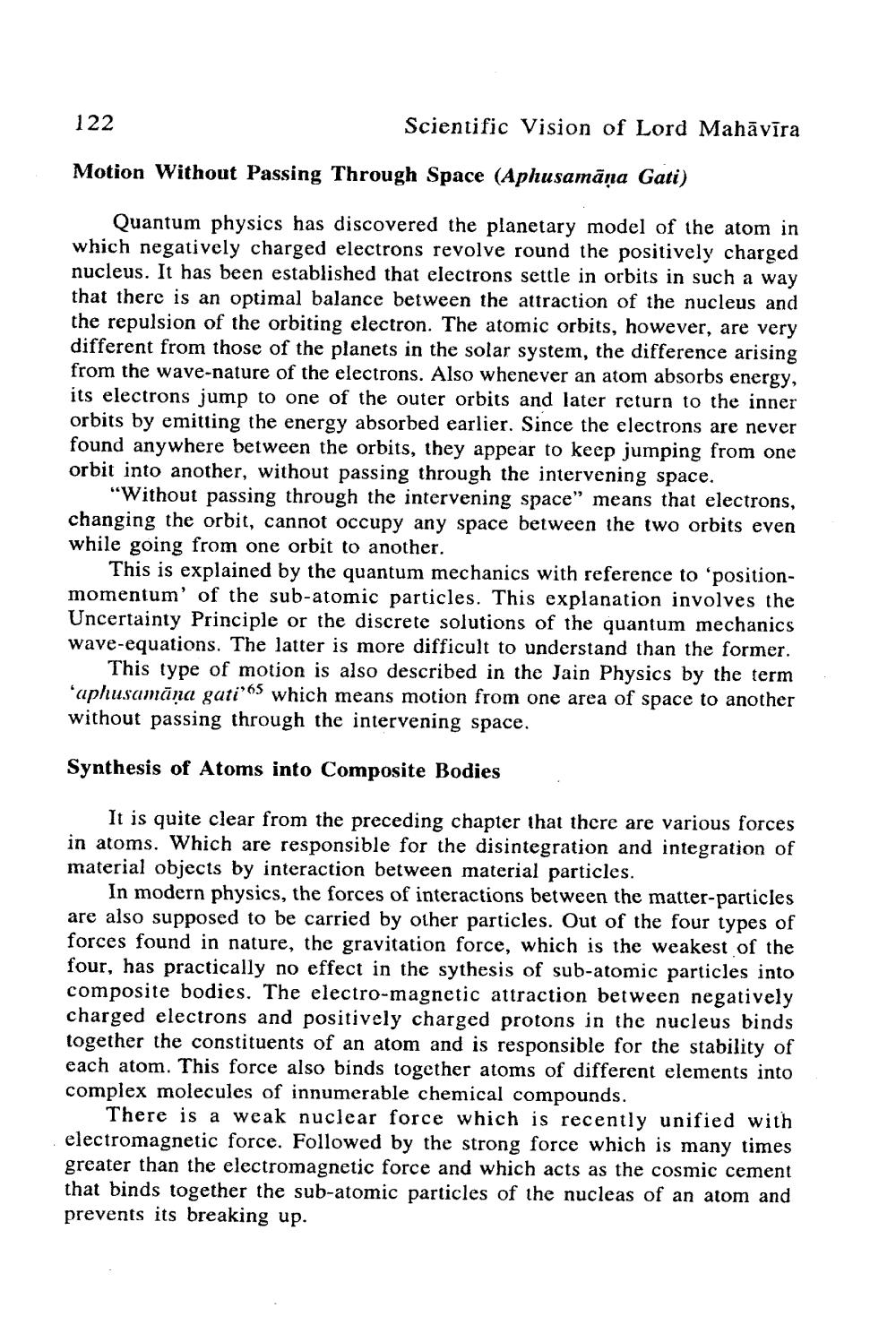________________
122
Scientific Vision of Lord Mahāvīra
Motion Without Passing Through Space (Aphusamāņa Gati)
Quantum physics has discovered the planetary model of the atom in which negatively charged electrons revolve round the positively charged nucleus. It has been established that electrons settle in orbits in such a way that there is an optimal balance between the attraction of the nucleus and the repulsion of the orbiting electron. The atomic orbits, however, are very different from those of the planets in the solar system, the difference arising from the wave-nature of the electrons. Also whenever an atom absorbs energy, its electrons jump to one of the outer orbits and later return to the inner orbits by emitting the energy absorbed earlier. Since the electrons are never found anywhere between the orbits, they appear to keep jumping from one orbit into another, without passing through the intervening space.
"Without passing through the intervening space" means that electrons, changing the orbit, cannot occupy any space between the two orbits even while going from one orbit to another.
This is explained by the quantum mechanics with reference to 'positionmomentum' of the sub-atomic particles. This explanation involves the Uncertainty Principle or the discrete solutions of the quantum mechanics wave-equations. The latter is more difficult to understand than the former.
This type of motion is also described in the Jain Physics by the term 'aphusamāna gati''3 which means motion from one area of space to another without passing through the intervening space.
Synthesis of Atoms into Composite Bodies
It is quite clear from the preceding chapter that there are various forces in atoms. Which are responsible for the disintegration and integration of material objects by interaction between material particles.
In modern physics, the forces of interactions between the matter-particles are also supposed to be carried by other particles. Out of the four types of forces found in nature, the gravitation force, which is the weakest of the four, has practically no effect in the sythesis of sub-atomic particles into composite bodies. The electro-magnetic attraction between negatively charged electrons and positively charged protons in the nucleus binds together the constituents of an atom and is responsible for the stability of each atom. This force also binds together atoms of different elements into complex molecules of innumerable chemical compounds.
There is a weak nuclear force which is recently unified with electromagnetic force. Followed by the strong force which is many times greater than the electromagnetic force and which acts as the cosmic cement that binds together the sub-atomic particles of the nucleas of an atom and prevents its breaking up.




